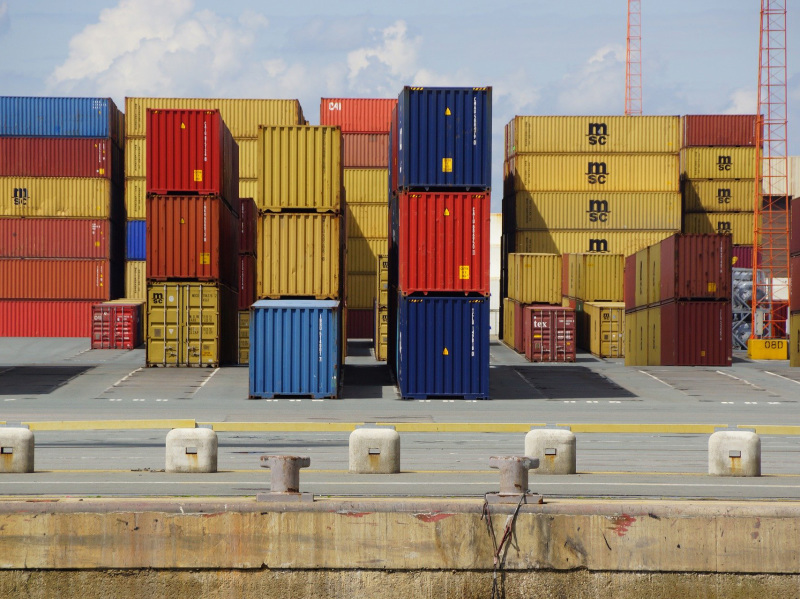Monitoring instrument of Flemish transport nodes
19035
From 2019 to 2021
The feasibility study on the Flemish Nodes Monitor is developing a tool that can produce annual numerical analyses of mobility in Flemish nodes. TML collected and analysed data for an MS Access database and a synthesis tool in MS Excel to reveal trends and evolutions per node.
The feasibility study on the Flemish Focal Points Monitor aimed to investigate the viability of an instrument that could produce an annual numerical analysis of mobility in the Flemish focal points (being the seaports of Antwerp, Ghent, Zeebrugge, and Ostend and the airports of Kortrijk-Wevelgem, Ostend-Bruges, Zaventem, and Antwerp). The known existing statistics at MORA/Vlaamse Havencommissie and the National Bank are the starting point. The final objective is that MOW itself has a regularly updated dataset, which goes beyond the known existing statistics at MORA/Vlaamse Havencommissie and Nationale Bank.
The inventory of existing data showed that these were mainly available from the port authorities themselves (whether or not through the MORA), from the National Bank of Belgium, and from the Flemish Environment Agency. Additional data were found at, among others, Port+, De Vlaamse Waterweg, Infrabel, and MOW itself. This made it possible to compile a dataset of in nearly 50 indicators, grouped in matrix form on the one hand by port function (Transhipment, Industry, Logistics, Total) and by performance indicator (Output, Growth potential, Social support).
Modal split was the core indicator of the assignment. The port authorities themselves collect data around this, but the method of calculation is not necessarily comparable among themselves, and the data are not necessarily complete and usually not transparent. Using data from De Vlaamse Waterweg, Infrabel, and ViaPass (originating from the kilometre levy system), an approximate bottom-up calculation method was worked out for modal split, but this still has many limitations. Obtaining richer data (with information on tonnages, types of goods, origin/destination), especially for road transport, could be an important step in improving the quality of this important indicator.
Other important data gaps relate mainly to public investments outside the MOW department, travel times/waiting times in the ports themselves, area sub-indicators (e.g., area of quays, warehouses, industry ...) as a function of productivity calculations, and information on the level of training of workers in the port.
The data collected were stored in an MS Access database and can be easily consulted and updated via specifically designed forms. The emphasis of the data collection is on displaying time series to show trends by node, rather than making comparisons between nodes.
With a view to interpreting the information, a Synthesis Tool has been prepared (in MS Excel) in addition to the Nodes Monitor database. These tools complement each other. Individual indicators can be consulted in the database, while the Synthesis Tool links several indicators together and allows certain evolutions to be viewed together using various visualisations (e.g., emissions as a function of transhipment of certain cargo types). An aggregated indicator also allows the evolution of the port as a whole to be considered. To interpret such aggregated indicators, it is important to be well acquainted with the actual events that can explain the trends (e.g., activities of terminals or companies started or stopped).
The feasibility study on the Flemish Focal Points Monitor aimed to investigate the viability of an instrument that could produce an annual numerical analysis of mobility in the Flemish focal points (being the seaports of Antwerp, Ghent, Zeebrugge, and Ostend and the airports of Kortrijk-Wevelgem, Ostend-Bruges, Zaventem, and Antwerp). The known existing statistics at MORA/Vlaamse Havencommissie and the National Bank are the starting point. The final objective is that MOW itself has a regularly updated dataset, which goes beyond the known existing statistics at MORA/Vlaamse Havencommissie and Nationale Bank.
The inventory of existing data showed that these were mainly available from the port authorities themselves (whether or not through the MORA), from the National Bank of Belgium, and from the Flemish Environment Agency. Additional data were found at, among others, Port+, De Vlaamse Waterweg, Infrabel, and MOW itself. This made it possible to compile a dataset of in nearly 50 indicators, grouped in matrix form on the one hand by port function (Transhipment, Industry, Logistics, Total) and by performance indicator (Output, Growth potential, Social support).
Modal split was the core indicator of the assignment. The port authorities themselves collect data around this, but the method of calculation is not necessarily comparable among themselves, and the data are not necessarily complete and usually not transparent. Using data from De Vlaamse Waterweg, Infrabel, and ViaPass (originating from the kilometre levy system), an approximate bottom-up calculation method was worked out for modal split, but this still has many limitations. Obtaining richer data (with information on tonnages, types of goods, origin/destination), especially for road transport, could be an important step in improving the quality of this important indicator.
Other important data gaps relate mainly to public investments outside the MOW department, travel times/waiting times in the ports themselves, area sub-indicators (e.g., area of quays, warehouses, industry ...) as a function of productivity calculations, and information on the level of training of workers in the port.
The data collected were stored in an MS Access database and can be easily consulted and updated via specifically designed forms. The emphasis of the data collection is on displaying time series to show trends by node, rather than making comparisons between nodes.
With a view to interpreting the information, a Synthesis Tool has been prepared (in MS Excel) in addition to the Nodes Monitor database. These tools complement each other. Individual indicators can be consulted in the database, while the Synthesis Tool links several indicators together and allows certain evolutions to be viewed together using various visualisations (e.g., emissions as a function of transhipment of certain cargo types). An aggregated indicator also allows the evolution of the port as a whole to be considered. To interpret such aggregated indicators, it is important to be well acquainted with the actual events that can explain the trends (e.g., activities of terminals or companies started or stopped).


